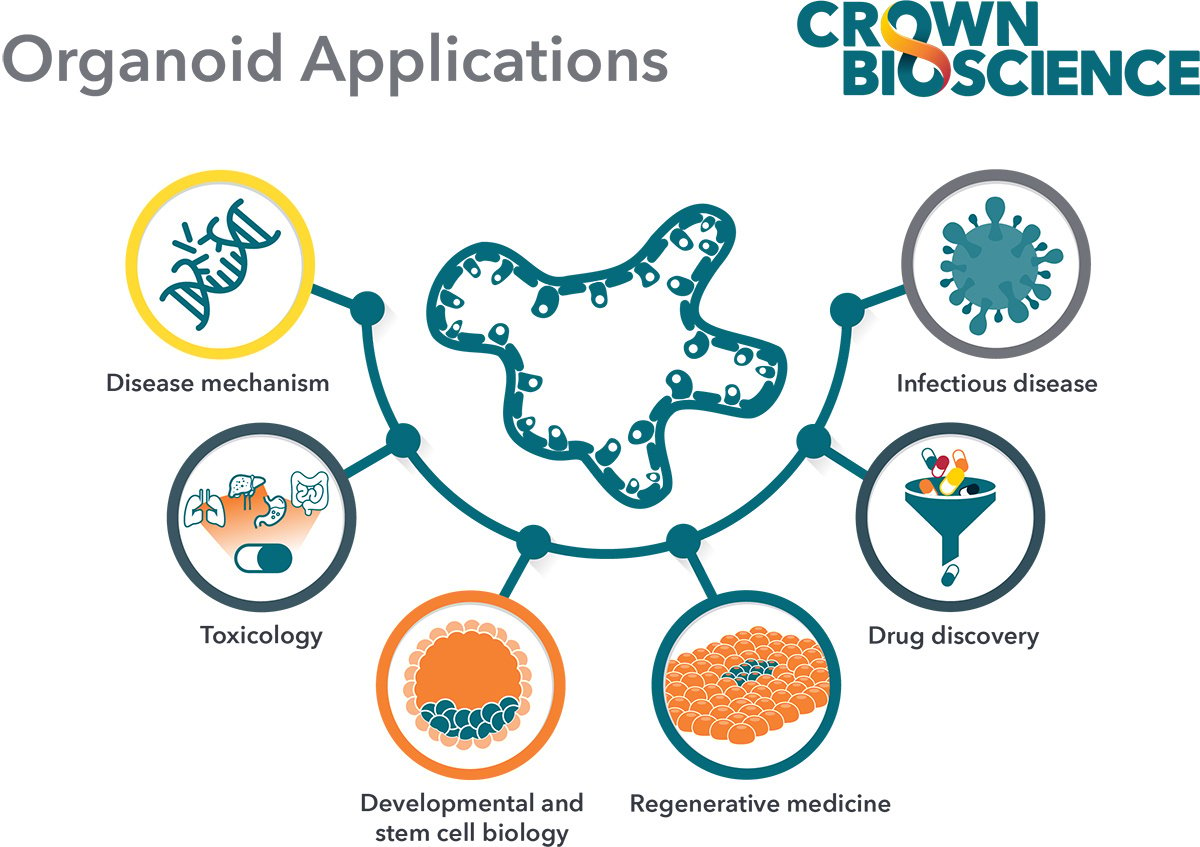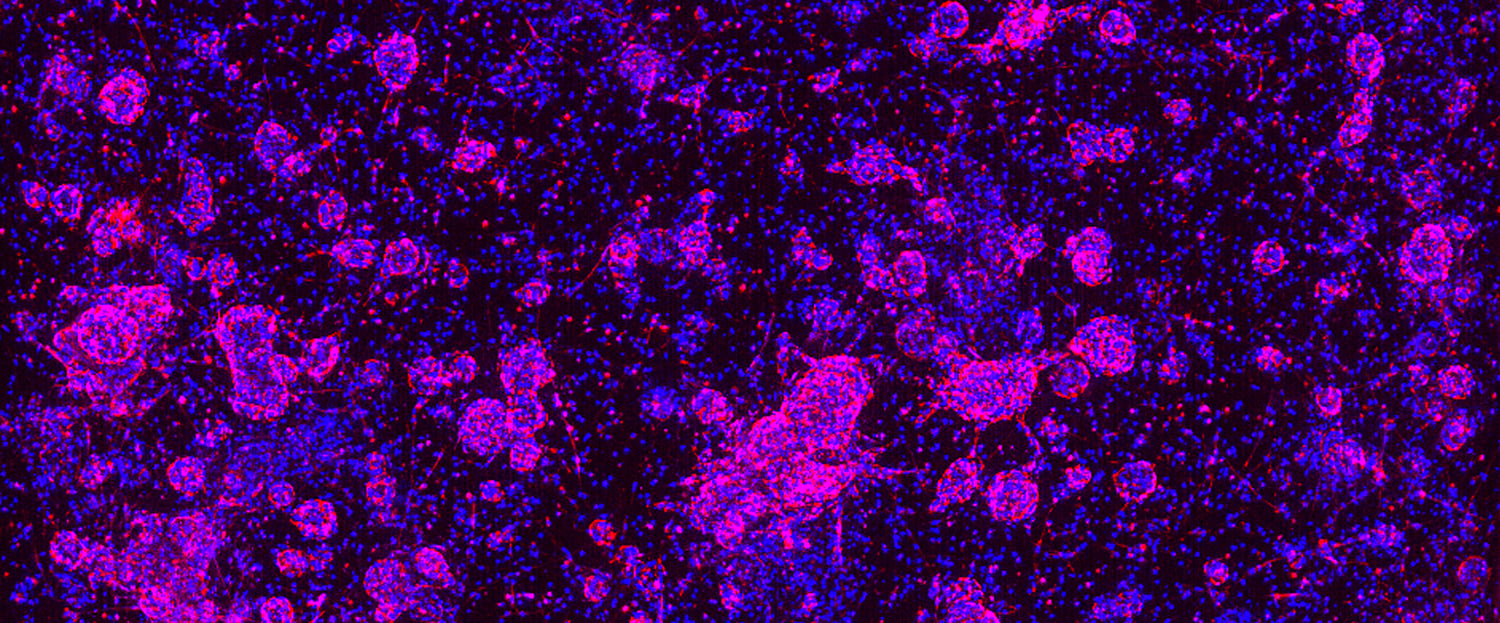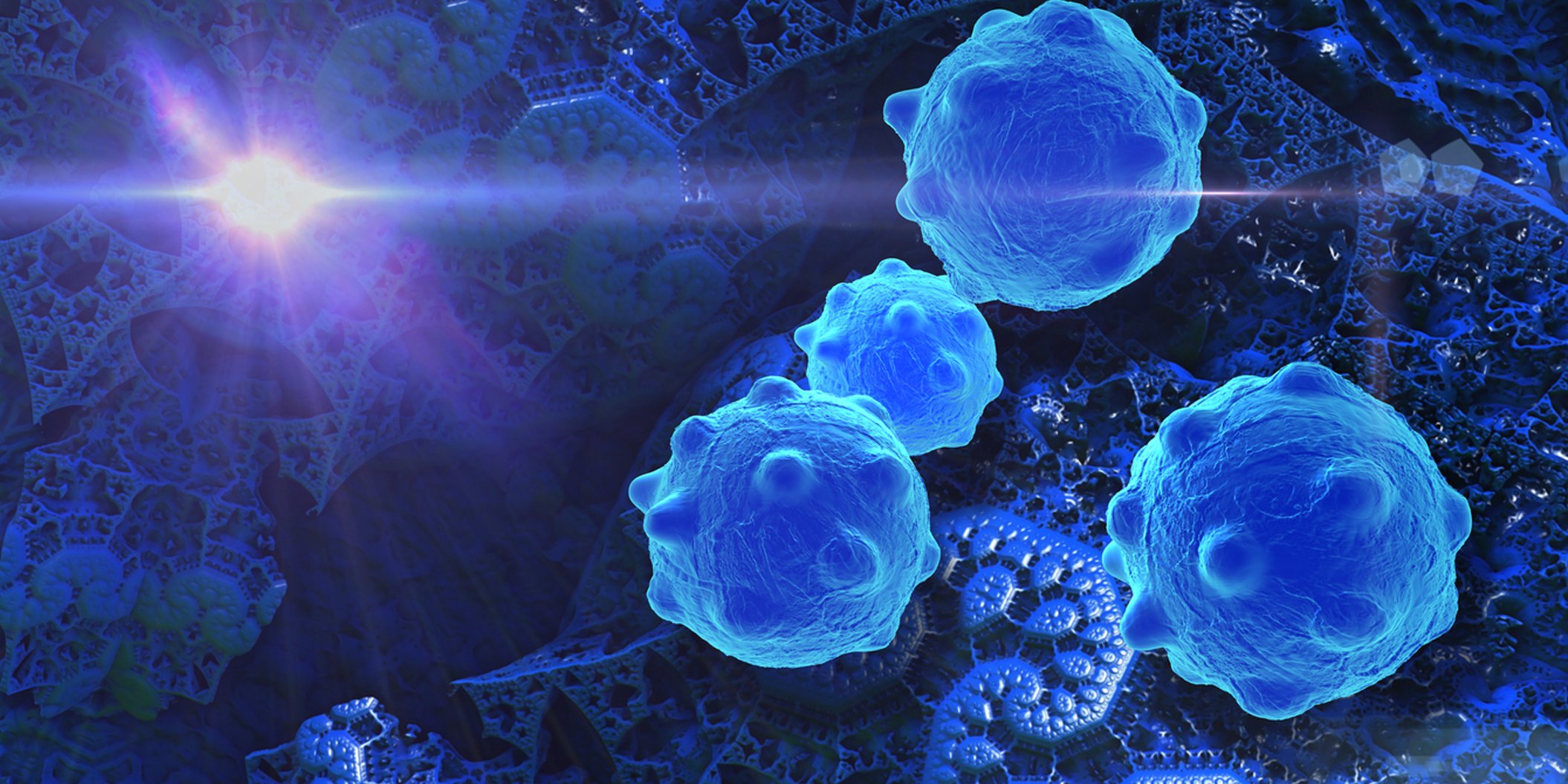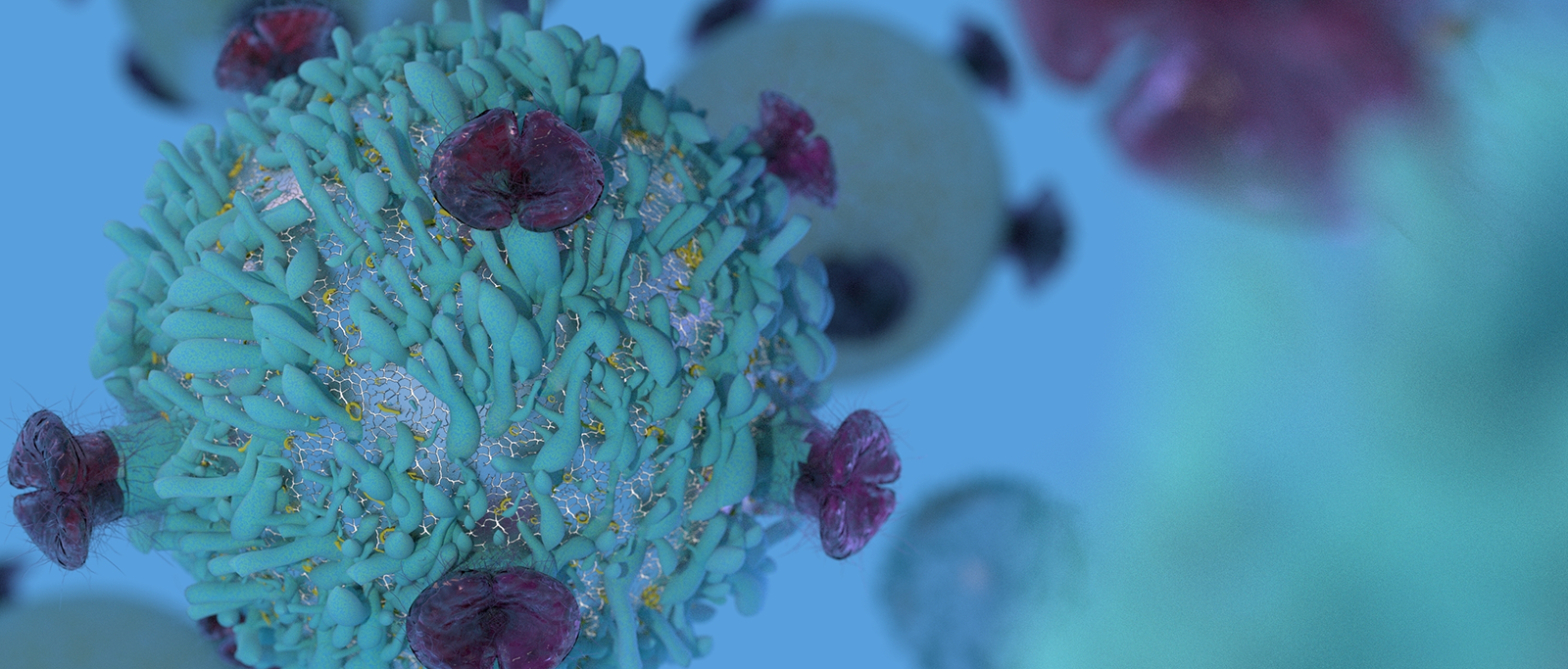Explore the key applications of organoids, which are increasingly being used as in vitro models of human development and diseases, such as cancer.
The Need for Organoids in Research and Development
Improved preclinical models are needed for both basic research and drug development across a range of applications. Organoids (which we’ve discussed in detail in a previous post) have the potential to:
- Recapitulate physiologically relevant 3D tissue architecture, known to influence therapeutic response
- Maintain stable genomic and phenotypic profiles in long-term culture (with passaging)
- Provide a platform for growing and propagating healthy cells in vitro without relying on viral transduction or transformation, which is key for studying basic developmental biology
- Offer a quick and cost-effective preclinical model solution that are amenable to large-scale drug screening
Key Applications of Organoids
Organoids have revolutionized in vitro modeling by providing 3D structures that closely mimic the architecture and function of human tissues. Some key applications of organoids in various fields of research include; developmental and stem cell biology, disease mechanisms, regenerative medicine, toxicology, infectious diseases, and drug discovery. Each of these fields of research will be discussed below.
Developmental and Stem Cell Biology
Study of Developmental Processes: Organoids derived from stem cells are invaluable for studying early development, morphogen roles, and cell fate commitment.
Maintenance and Expansion: Protocols now allow for long-term maintenance and expansion of organoids, enabling detailed study of stem cell biology, including signals that maintain stemness and induce proliferation.
Applications Examples:
- High-throughput Drug Screening: Liver organoids can be used for high-throughput drug screening and toxicology studies. They provide a more physiologically relevant model compared to 2D cell cultures for assessing drug metabolism and hepatotoxicity, and also offer safer and more effective drug development, with reduced reliance on animal testing.
- Cancer Research: Tumor organoids derived from patient tumor samples (e.g., colorectal cancer) can be used to study tumor heterogeneity, tumor microenvironment interactions, and response to chemotherapy and immunotherapy. This provides us with the opportunity to develop more personalized cancer treatments and offers us a better understanding of cancer biology.
Disease Mechanisms
Organoids are known for their stable genetic and physical traits, which help maintain disease-related mutations over time in long-term cultures. They can be easily modified using CRISPR/Cas9 or shRNA technologies, allowing researchers to study the role of specific genes in diseases.
Applications Examples:
- CRISPR/Cas9 Genome Editing: CRISPR/Cas9 has been used to correct mutations in the CFTR gene in organoids derived from cystic fibrosis patients. Researchers successfully demonstrated that the corrected CFTR gene was functional and operated normally in these organoids, which are mini-intestines grown in the lab from patient-derived cells. This correction restored the CFTR protein function, indicating a promising approach for treating cystic fibrosis with gene editing.
- Gastric Development and Disease: Human gastric organoids have helped discover new signaling mechanisms in early stomach development and understand disease mechanisms. For example, they revealed how H. pylori infection activates signaling and causes epithelial cell growth.
Regenerative Medicine
Tissue Reconstruction: Organoids can reconstruct tissue layers, as demonstrated in colitis models where intestinal organoids retained their features post-transplantation, showing potential for regenerative therapies. Organoid transplantation in experimental colitis models proved that an intact intestinal layer can be reconstructed. When small intestinal organoids were transplanted in the colon, they successfully retained their original features, like villus formation and the presence of Paneth cells. This retention shows the phenotypic stability of cultured adult stem cell (ASC)-derived organoids.
Application Example: One practical application of this technology is in treating patients with Crohn's disease or ulcerative colitis, characterized by chronic inflammation and damage to the intestinal lining. By transplanting healthy, lab-grown intestinal organoids into affected areas, doctors could potentially repair damaged tissues and restore normal intestinal function. This approach could reduce the need for invasive surgeries and long-term medication use, improving the quality of life for patients with these debilitating conditions.
Toxicology
Drug Toxicity Testing: Organoids' accurate microanatomy makes them suitable for in vitro drug toxicity modeling, complementing in vivo data. Organoids are considered miniature versions of organs and often display a very accurate microanatomy. This makes them invaluable for in vitro modeling of drug adverse effects, specifically in organs commonly susceptible to drug-induced toxicities (i.e., gastrointestinal tract, liver, kidney). This in vitro data complements data from in vivo studies.
Application Example: Nephrotoxicity: Kidney organoids have been used to confirm cisplatin as a nephrotoxicant, highlighting their utility in toxicity screening. Kidney organoids that contain nephrons associated with a collecting duct network surrounded by renal interstitium and endothelial cells have been successfully generated. Using this model, cisplatin was confirmed to be nephrotoxicant, suggesting that organoids can be used for nephrotoxicity screening.
Drug Discovery
Organoids can be efficiently derived from healthy and diseased patient tissues, with relative ease of establishment and expansion in vitro. This allows for drug response studies, and offers side-by-side comparison of healthy and diseased tissues. Organoids also allow researchers to ask patient-specific pharmacological questions during their drug discovery process.
Application Examples:
- Cancer Research: Tumor organoids replicate patient cancer in vitro, aiding in personalized medicine and cancer mechanism studies.
- Large-Scale Screening: Tumor organoids reflect intra-tumor and inter-patient heterogeneity, making them ideal for drug efficacy testing and personalized drug response evaluations.
- Immuno-oncology (IO): Co-cultures of patient-derived organoids with immune cells are used to screen IO compounds and engineered T cells, preserving tumor T cell receptor spectra and cytotoxicity profiles similar to patient responses to immune checkpoint inhibitors.
- Mouse tumor derived-organoids: Additionally, an air-liquid interface system to propagate PDOs and mouse tumor-derived organoids was recently published. When the organoids were transplanted into syngeneic hosts, they showed native embedded immune cells (i.e., T, B, NK, macrophages). Sophisticated sequencing techniques also showed that PDO tumor-infiltrating cells accurately preserved the original tumor T cell receptor spectrum. The PDOs displayed cytotoxicity profiles similar to those in patients treated with immune checkpoint inhibitors, such as anti-PD-1 and /or anti-PD-L1.
Conclusion
Compared to traditional in vitro culture models, organoids provide a superior platform for modeling human development and disease due to their ability to accurately reflect the structure and function of original tissues. Researchers are leveraging organoids for various applications, enhancing our understanding and treatment of numerous conditions.
To learn more about the use of organoids for oncology drug development, read more here: https://www.crownbio.com/wp/when-and-how-to-use-tumor-organoids-in-drug-discovery







